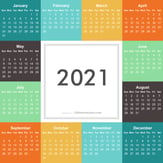 by Lynda McDaniel, Your Inspired Writing Coach, and People-OnTheGo Faculty Member
by Lynda McDaniel, Your Inspired Writing Coach, and People-OnTheGo Faculty Member
The art of headline writing is more useful than you may think. Sure, you’re accustomed to headlines atop your reports and proposals, blogs and articles. But what is a tweet if not a 140-character headline? E-mail subject lines? Headlines in a box. And titles, subtitles, and subheads are simply headlines with a different name.
Engaging headlines are the antidote to TMI—too much information—which has turned us all into skimmers. Captivating headlines and subtitles grab our attention, and engaging subheads make us stop skimming and really read.
Let’s explore four ways to help you write headlines that hook readers—and results.
1. Learn from the publishers
The publishing industry has spent millions of dollars to discover what makes people buy their magazines. You can benefit from their research by studying the “cover lines,” those teasing headlines that flash like neon at passersby. Below are six of the most popular cover line categories and why they're so effective:
-
How to - (How to Writer Faster, Stronger, Better) People are eager to learn.
-
Why - (Why Dogs Love Humans) “Why” is a magnet for curious minds.
-
Questions - (Why Do Customers Buy?) Questions draw in readers and offer the promise of solutions.
-
Statements - (Living in Harmony: A Guide to Creating Community Organizations) Offers, ideas, and information people connect with.
-
Numbers - (Six Steps to Effective Headlines) The human brain is wired for numbers.
-
Controversy - (The Myth of Teambuilding) Stir things up to draw in readers.
2. Focus on benefits
Think of your headline from the readers’ perspective. How will your content benefit them? Write to them (not only in the headline but throughout your content). For example, 10 Ways to Work Less and Still Get a Promotion.
-> Sign up for our two-part Business Writing for Success webinar on April 17 & 24, 2014.
3. Use the List of 20
The brainstorming technique List of 20 makes you dig deeper, beyond the obvious. If you were writing a guide on how to become a consultant, for instance, you might start with a headline “How to Become a Consultant.” In one respect, that’s not a bad headline—people often start their searches with “how to”—but it registers zero in personality. By number 10 you’ve graduated to “Working Alone to Help Others Work,” but by number 20 you’ve hit your stride with “A 10-Step Survival Guide for New Consultants.”
4. Include keywords for SEO
Keywords boost the effectiveness of headlines. Consider the bestselling book title How Not to Look Old. It needs (and has) a subtitle packed with keywords: Fast and Effortless Ways to Look 10 Years Younger, 10 Pounds Lighter, 10 Times Better. If you need help coming up with keywords, pay attention to the words Google or Amazon suggest in their search boxes. These are popular, powerful words that can boost your SEO.
Take the extra time to craft headlines worthy of your article, blog, email or book. Otherwise, you may lose your readers—and those results you’ve wanted to your results.
Click now for more details on the Business Writing for Success webinar, April 17 & 24.








